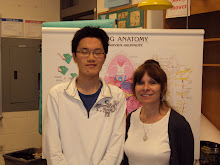At the beginning of the third paragraph in Synesthesia written by Elizabeth Glinka, the author writes “Synethesia, originating from the Greek roots syn, meaning together, and aisthesis, meaning sensation, accurately defines this neurologic phenomenon (Hornik 48)”, which can be treated as a paraphrase. She presents this sentence here, at the beginning of the third paragraph, because she mentions the phenomenon and external sensation of Synesthesia in the first paragraph and latter in the second paragraph, she talks a little bit detailed about its history, and now it is the appropriate moment to explain what this term Synethesia actually means. Furthermore, this is a very affluent transition from the introduction paragraph to body paragraph which is about Synesthesia itself.
“Researchers believe John Locke, a 17th century political philosopher, first referenced synesthesia in An Essay Concerning Human Understanding, when he stated, ‘a studious blind man who…bragged one day that he now understood what scarlet signified…It was like the sound of a trumpet”(qtd. In Cytowic 52) This sentence can be treated as a quotation. Explicitly the author uses the quotation mark and the abbreviation “qtd” to express this is a quotation but not paraphrase and summary. The author presents the sentence here in order to show the process of the discovery and understanding of Synesthesia. The following sentence “About 20years after Locke’s essay was published, Thomas Woolhouse, and English ophthalmologist, made the ‘first medical reference to synesthesia’” is the further acknowledgment of Synesthesia. Therefore, the previous sentence starts the introduction of the discovery and understanding of syesthesia.

No comments:
Post a Comment